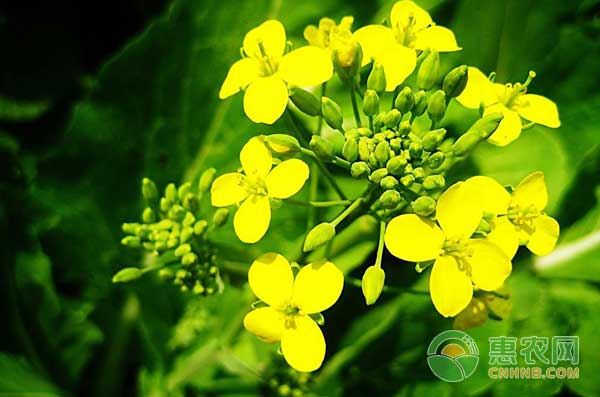Dry weather in the north is often dry, and the drought tolerance of rapeseed is relatively poor. Therefore, in order to successfully grow rapeseed in the north, the following rapeseed drought-resistant cultivation techniques were summarized through years of planting experiments. First, timely drought resistance The rapeseed in the dryland of the north should not be shallow, loose, or cultivated. The soil will cause the soil moisture to decrease, which will lead to the accelerated death of the seedlings; if there are irrigation conditions, it should be watered and drought-resistant as soon as possible. The water can be introduced into the trench by means of furrow irrigation, and the water surface will be drowned in the deep three-quarters of the ditch for about one day to allow water. Infiltrate into the car and then release water in time to avoid waterlogging; areas with limited water supply can use water pipes or artificial water to wet the tank surface to resist drought, and ensure that the soil wet depth is about 30 cm. Once the drought has eased, it is necessary to pay close attention to the fertilizer and promote the seedlings and the cultivating and cultivating, that is, shallow soil and smashed soil to reduce the soil gap and reduce the evaporation of soil water; rapeseed land that cannot be filled (watered) can also be sprayed with drought and water. The agent is sprayed with 1000~1200 times aqueous solution of fulvic acid (also known as drought-resistant agent No. 1, FA "green field") to reduce water evaporation. Second, cultivating weeding and straw covering The paddy field rapeseed with irrigation conditions in the Yangtze River basin can be irrigated and weeded at the same time of irrigation, which can promote the development of roots and roots of rapeseed and increase the ability of roots to absorb and utilize deep water in the soil. The conditional area can cover 75-100 kilograms of straw and leaves per acre to cover the bare ground between the rapeseed rows, which has the effect of reducing surface evaporation, increasing ground temperature and inhibiting weed growth. Third, timely scientific topdressing and promoting seedlings For different seedlings of rapeseed and different drought degree, the rapeseed in the main producing area should be scientifically fertilized according to local conditions. 1. For the normal growth of rapeseed, timely apply the manure, apply 4-6 kg of urea per acre, and 2-4 kg of potassium chloride in the initial stage of rapeseed twitching. If the base fertilizer is not fertilized or the application amount is insufficient, spray high-quality boron fertilizer. (such as Suile boron) about 30 grams (two times, the concentration of 0.2%, two times a week apart), spray the boron fertilizer can be sprayed twice the concentration of 0.5% potassium dihydrogen phosphate 100 grams. 2. It is necessary to timely supplement nutrients in areas with severe drought. At present, the use of foliar application and combined drought-resistant soil fertilization measures to promote rapeseed growth. Foliar fertilization can be used in 50 g of urea, 50 g of potassium dihydrogen phosphate, 20 g of potassium nitrate, 10 g of quick-lean boron, and continuously sprayed with water for 20 kg three times each time for 5-7 days; combined with drought-resistant watering measures After the ditch water is finished, 2-4 kg of urea, 1-2 kg of diammonium phosphate and 1-2 kg of potassium chloride are applied per mu, and the effect can be maximized by combining fertilization with cultivating soil. Fourth, pest control The main disease during rapeseed is powdery mildew, and powdery mildew can be sprayed with 15% powder rust WP 1500 times or Fengmi 500-700 times or 50% carbendazim 500 times at the beginning of the disease. Prevention and treatment 2 to 3 times each interval of 7 to 10 days. After drought, the seedlings weaken and the resistance is reduced. The high humidity may cause diseases such as sclerotinia, viral diseases and downy mildew. After the temperature rises, it should be closely monitored and guided. In the dry season, there are 10% of the rate of sorghum in the seedling stage, that is, 1 to 2 heads per plant, and 10% of the stems or inflorescences of the twitching flowering stage have aphids. When each branch has 3 to 5 heads, 40% Lego emulsifiable concentrate 1000~ 2000 times liquid (or 20% cockroach 1000-1400 times liquid or 50% malathion 1000-2000 times liquid or 2.5% enemy killing emulsion 3000 times liquid) and other agents to eliminate pests. Chemical control of Pieris rapae and Plutella xylostella: 1 week after the peak of hatching of the cabbage caterpillar, before the larva 3 years old or before the larvae of the diamondback moth larvae to 2 years old, use 25% imipenem 400 times solution (or 50 The agent is treated with a reagent such as % malathion EC 500 times or 2.5% bromide 3000 times. For rapeseed stems, it also needs to be paid attention to. From mid-February to late March, it can be sprayed evenly with 1500 times of 40% dimethoate emulsion for 1 or 2 times. When planting non-tolerant crops in the arid regions of the north, the most important thing is to maintain soil moisture and timely topdressing to promote crop growth. In addition, farmers must do a good job in pest control. Hair Wash Shampoo,Natural Shampoo,Hair Nourishing Shampoo,Ginger Hair Shampoo Wuxi Keni Daily Cosmetics Co.,Ltd , https://www.kenicosmetics.com
